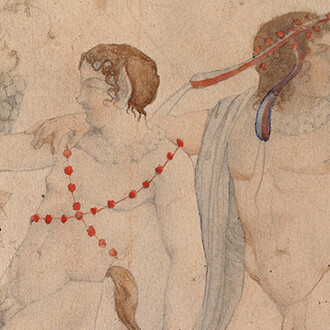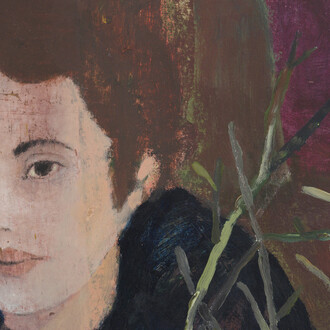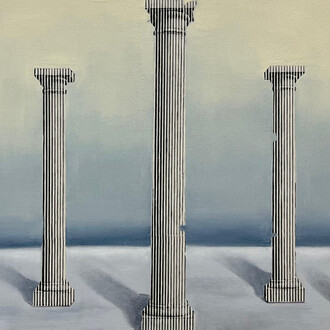Galerie Templon continues to explore the work of leading American Color Field painter Jules Olitski (1922-2007) after showing his paintings from the 70s and 80s in 2015 and 2019 respectively. The new exhibition is divided into two parts, one in Paris, the other in New York at Yares Art, and focuses on his work from the 90s.
The series of Mitt paintings, not often exhibited during Jules Olitiski’s lifetime, bear witness to his unwavering passion for experimenting with colour and light. In the late 80s he was one of the first artists to grasp the brand-new artistic possibilities of the new range of paints supplied by Golden Artists Colors Inc., the pioneering acrylic paint company. After throwing and spraying an abundance of material and raw colour on the canvas, Olitski used mittens to spread it in a ballet of ample rippling movements that only looked improvised. The works shatter the codes of “simple” painting while flirting with the codes of sculpture. The canvases reveal a subtle play of surfaces where both the acrylic paint and the light are sensually sculpted. In the artist’s hands, the material is alternately luminous or sombre, matt or glowing, elastic or adhesive.
Starting in the 60s, Olitski pioneered an experimental practice, termed “modernist”, making it possible "to experience painting as painting" (Michael Fried). He then shifted to an approach unfettered by modernist leanings, oscillating between the materiality and immateriality of colour. With the Mitt paintings, he no longer confined himself to questioning the essence of the painting; the works also delve into the ambiguous nature of its surface and the notion of the random, in the form of the mysterious bond between hand and picture. The series thus marks the culmination of decades of artistic exploration and reflection on the power of the abstract.
Born in 1922 in Soviet Russia, Jules Olitski emigrated to the USA as a child and went on to study at New York University. He was one of the key figures of the Color Field Painting movement associated with American art critic Clement Greenberg and pioneered by artists including Barnett Newman, Mark Rothko and Clyfford Still. Jules Olitski, Kenneth Noland and Morris Louis represented the movement's second generation, practitioners of “self-critical painting” centred on its own attributes (Ann Hindry).
Jules Olitski represented the USA at the Venice Biennale in 1966 and in 1969 became the first living artist to exhibit his work at the Metropolitan Museum of Art. The artist’s work has been shown at leading museums internationally: the San Francisco Museum of Art, 1967, Whitney Museum of American Art, 1971, Portland Museum of Art, 1998, Smithsonian American Art Museum, 2008, Toledo Museum of Art, 2012, Naples Museum, 2013, and Reading Museum, 2014. It can also be found in many prestigious collections worldwide, including the Museum of Modern Art and Met Museum (New York), National Gallery of Art (Washington), Solomon R. Guggenheim Museum (New York), Art Institute of Chicago (Chicago), Brooklyn Museum (New York) and Tate Modern (London).
















